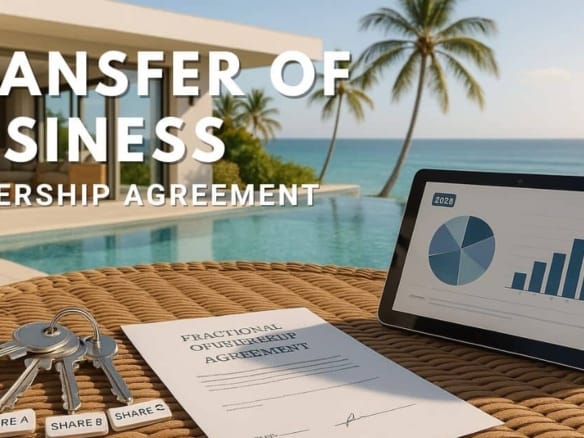Mastering vacation rental pricing factors is the cornerstone of profitability in the competitive short-term rental market. With 2025 seeing a 22% surge in global vacation rental demand (AirDNA Report), property owners who optimize pricing strategies gain a decisive edge.
This guide dissects every critical factor from dynamic pricing algorithms to seasonal adjustments empowering you to set nightly rates that boost occupancy and revenue. Whether you’re a seasoned property manager or new to the rental industry, these actionable insights will transform your vacation rental business into a high-yield asset.
Table of Contents
Understanding Vacation Rental Pricing Fundamentals
Vacation rental pricing strategies hinge on balancing market demand with property value. Unlike traditional rentals, vacation rentals require responsive to market changes—adjusting rates daily based on competitor pricing, local events, and booking trends. A robust pricing strategy considers occupancy and revenue holistically: underpricing leaves money on the table, while overpricing tanks occupancy rate.
The vacation rental industry now relies on data-driven pricing. Successful property managers analyze real-time market data to set the right price for your vacation rental. For instance, a beachfront property in Miami might command higher nightly rates during Art Basel but need discounts in hurricane season. Understanding these nuances prevents pricing decisions that erode rental income.
Key Vacation Rental Pricing Factors
Location: The Primary Profit Driver
Location dictates 40–60% of vacation rental rates (Key Data Dashboard, 2025). Properties in tourist destinations like Joshua Tree or coastal Santa Rosa Beach leverage proximity to attractions to justify higher rates. Urban vacation rentals near convention centers surge during events, while mountain properties in Big Sky, Montana, peak during ski season. Local modifiers matter: a vacation rental in downtown Atlanta demands different pricing than a lakeside cabin in Lake Oconee.
Property Size, Type, and Amenities
Larger properties (e.g., 4-bedroom villas) or unique types (treehouses, houseboats) command premium pricing. Amenities directly influence pricing: hot tubs, pools, and gourmet kitchens can increase nightly rates by 20–35%. Even essentials like high-speed Wi-Fi and parking affect price elasticity. Luxury vacation rentals in Punta Mita or Malibu use specialized pricing tools to quantify amenity value, ensuring higher prices align with guest expectations.
Seasonality and Demand Fluctuations
Seasonal pricing is non-negotiable for profitable vacation rental pricing strategy. Peak seasons (summer in Cape Cod, winter in Aspen) see price surges of 50–100%, while off-peak months require discounts to maintain occupancy. Vacation rental owners must track market trends—e.g., Stowe, Vermont’s foliage season or Miami’s Art Basel—to adjust pricing accordingly. Dynamic pricing tools automate these shifts, capitalizing on demand spikes during holidays or local festivals.
Dynamic Pricing: The Revenue Game-Changer
Dynamic pricing uses algorithms to adjust your rates in real-time based on market demand, competitor pricing, and booking patterns. Unlike static pricing strategies, dynamic pricing responds to real-time market data—lowering rates during low occupancy and raising them when demand surges. For example, vacation rental property managers in Orlando use dynamic pricing software to increase rates during Disney World’s peak attendance.
Benefits include 15–30% higher revenue (Hostaway, 2025) and optimized occupancy rate. Tools like PriceLabs and Beyond Pricing analyze billions of data points—weather forecasts, flight prices, local events—to optimize pricing. Property managers use these tools to command higher rates without alienating price-sensitive guests.
Seasonal Pricing Adjustments: Maximizing Year-Round Revenue
Seasonal pricing tailors vacation rental prices to demand cycles. In coastal areas like Atlantic City, summer rates might be $300/night, dropping to $120 in winter. Mountain properties like Truckee, California, invert this model, charging higher prices during ski season. Short-term rental pricing strategies must account for shoulder seasons—transitional periods where targeted discounts can sustain occupancy.
Local modifiers refine this approach. A vacation rental in Scottsdale, Arizona, adjusts for spring training baseball, while properties near Portland, Oregon, surge during rose festivals. Effective vacation rental pricing strategy requires tracking hyper-local events and market changes to avoid leaving money on the table.


Property Tax Appeal Attorney: Cut Your Tax Bill by 30%+ (2025 Guide)

Commercial Property Law Made Easy: The 2025 Guide for Landlords, Tenants & Investors
Competitive Analysis and Market Positioning
Competitive vacation rental pricing begins with competitor pricing analysis. Property owners should benchmark against similar listings—size, amenities, location—using tools like AirDNA or MarketMinder. For instance, a 2-bedroom condo in Miami Beach should compare rates with 20 nearby listings, not city-wide averages.
Market trends further refine pricing. In 2025, vacation rental market shifts include rising demand for pet-friendly stays (up 18%) and work-friendly spaces (up 25%). Successful property managers incorporate these trends into pricing decisions, adding premiums for in-demand features. Revenue management hinges on this agility—adjusting rental rates to reflect market demand and competition.
Leveraging Technology for Price Optimization
Vacation rental management software like PriceLabs, Wheelhouse, or Beyond Pricing automates dynamic pricing. These specialized pricing tools use AI to analyze real-time market data, competitor pricing, and booking patterns, then adjust your rates 24/7. For example, dynamic pricing tools use algorithms to lower rates if a listing has low occupancy 30 days out, or surge prices during a local festival.
Benefits include:
- Scalability: Manage 100+ properties with specialized pricing tools for scalability.
- Accuracy: Reduce human error in pricing management.
- Speed: React instantly to market changes (e.g., a sudden concert announcement).
Utilizing a dynamic pricing tool is now essential for vacation rental success, with 78% of top hosts using automation (Guesty, 2025).
How Amenities Influence Vacation Rental Pricing
How do vacation rental amenities affect pricing? Premium features like hot tubs justify higher pricing in luxury vacation rental pricing factors. In miami florida vacation rental pricing factors or coral gables vacation rental pricing factors, Wi-Fi and pools boost value.
Basic amenities ensure baseline rates, while high-end ones support premium pricing.
Occupancy-driven pricing adjustments factor in these for maximum revenue.
Amenities and Their Impact on Pricing
Amenities directly justify higher rates. A hot tub can add $50/night, while a pool might increase nightly rates by $100. Luxury vacation rentals in Montauk or Islamorada use premium pricing for features like private chefs or yacht access. Even basic amenities—EV chargers, high-thread-count linens—differentiate listings in crowded markets.
Occupancy-driven pricing adjustments apply here. If a property with a hot tub maintains 90% occupancy at $250/night, raising rates to $275 could boost revenue without sacrificing bookings. Property managers must balance amenity costs against potential rental income increases.
Google’s AI Overviews (AIO) Section
AI-Driven Overview: Vacation rental pricing factors include location, seasonality, amenities, and dynamic pricing. Successful strategies use real-time data to adjust rates, maximizing occupancy and revenue. Tools like PriceLabs automate pricing based on demand, competition, and local events.
Bullet-Point Summary of Key Takeaways
- Location Drives Rates: Factor in local demand, like vacation rental pricing factors in miami, to command higher prices.
- Seasonality Matters: Adjust for peaks (e.g., miami vacation rental pricing factors july 2025) and off-peaks to maximize occupancy.
- Amenities Add Value: Premium features justify higher nightly rates and boost bookings.
- Use Dynamic Tools: Implement tools like PriceLabs for real-time adjustments and revenue growth.
- Analyze Competition: Regular competitor pricing ensures you don’t leave money on the table.
- Monitor Trends: Stay updated with 2025 market data for data-driven decisions.
- Optimize for Demand: Balance supply, demand, and guest sensitivity for profitable strategies.
Conclusion: Key Takeaways
- Location & Amenities: Drive 40–60% of pricing; leverage unique features for premiums.
- Dynamic Pricing: Essential for responding to market changes; boosts revenue by 15–30%.
- Seasonal Adjustments: Tailor rates to demand cycles; use local events for surges.
- Competitive Analysis: Benchmark against similar listings; incorporate market trends.
- Technology: Automate pricing with tools like PriceLabs for scalability and accuracy.
FAQ Section
Q1: How do you price a vacation rental?
A1: Combine location value, amenities, seasonal demand, and competitor pricing. Use dynamic pricing tools for real-time adjustments.
Q2: What is dynamic pricing for vacation rentals?
A2: Algorithm-based pricing that adjusts nightly rates based on market demand, occupancy, and competitor pricing.
Q3: What is a good profit margin for a short-term rental?
A3: 20–40% after expenses. Dynamic pricing and amenity premiums maximize margins.
Q4: How do vacation rental pricing algorithms work?
A4: They analyze real-time market data—events, weather, booking patterns—to optimize pricing.
Q5: What are the main vacation rental pricing factors?
A5: Location, seasonality, amenities, competitor pricing, and market demand.
Q6: How often should I update my vacation rental rates?
A6: Daily. Dynamic pricing tools automate this to respond to market changes.
Q7: What is the best pricing strategy for vacation rentals?
A7: Dynamic pricing combined with seasonal adjustments and amenity-based premiums.
Q8: Can you negotiate vacation rental prices?
A8: Rarely for peak dates, but possible for off-peak stays or long-term bookings.
Q9: How is vacation rental revenue calculated?
A9: Nightly rate × occupancy rate × 365 days, minus expenses.
Q10: What are the best dynamic pricing tools for vacation rentals?
A10: PriceLabs, Beyond Pricing, Wheelhouse, and Hostaway’s dynamic pricing software.




Join The Discussion